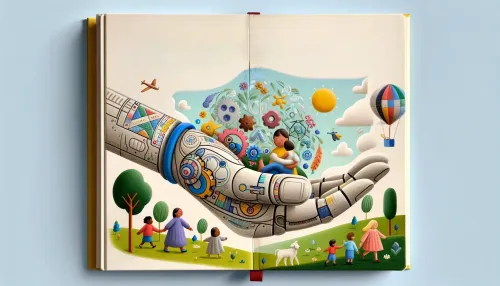Wearable Tech and Autism: Revolutionizing Therapeutic Interventions

HorizonsMind Blog is excited to delve into the groundbreaking advancements in utilizing wearable technology to revolutionize therapeutic interventions for autistic children. With a focus on integrating wearable tech in personalized autism therapy, exploring innovative applications to support emotional well-being, advancing communication skills, and embracing novel tech solutions, this article brings forth valuable insights into the intersection of technology and autism support.
Autism spectrum disorder (ASD) presents unique challenges that can greatly benefit from personalized therapeutic interventions. Wearable technology has emerged as a game-changer in this domain, offering tailored solutions that cater to the individual needs of autistic children. From smart sensory devices that monitor stress levels to wearable trackers that provide real-time feedback on emotional states, the integration of wearable tech in personalized autism therapy holds immense promise.
Integrating Wearable Tech in Autism Therapy
Research indicates that personalized therapy plans yield significantly positive outcomes for autistic individuals. By leveraging wearable tech, therapists and caregivers can gain deeper insights into the child's behavioral patterns, enabling them to craft interventions specifically tailored to address their unique needs and challenges. This integrative approach fosters a more holistic and effective therapeutic journey for autistic children.
How does wearable tech enhance personalized therapy?
Emotional regulation is a focal point in autism therapy, and wearable technology offers innovative ways to support emotional well-being in autistic children. Smart wearables equipped with biofeedback mechanisms can assist in identifying potential triggers for anxiety or sensory overload, allowing for preemptive measures to be implemented. Moreover, the integration of wearable devices into mindfulness exercises and emotional regulation activities empowers autistic children to better understand and manage their emotions.
The utilization of wearable technology not only enhances the emotional well-being of autistic children but also provides caregivers and therapists with invaluable data regarding emotional responses and coping mechanisms. This data-driven approach facilitates a comprehensive understanding of the child's emotional landscape, enabling the formulation of targeted strategies to nurture emotional resilience and well-being.
How can wearables support emotional regulation?
Communication represents a significant area of focus in the developmental journey of autistic children. Wearable technology extends its transformative influence by advancing communication skills through innovative applications tailored for individuals on the autism spectrum. Augmentative and alternative communication (AAC) devices integrated into wearables provide non-verbal autistic children with enhanced means of expressing themselves, fostering greater independence and self-expression.
Furthermore, wearable tech incorporating speech recognition algorithms aids verbal autistic individuals in refining their communication abilities by providing real-time feedback and customized learning prompts. These advancements empower autistic children to develop and strengthen their communication skills within a supportive technological framework, ultimately enhancing their ability to engage with the world around them.
Advancing Communication Skills with Wearable Tech
As we look towards the future of autism support, the integration of wearable technology continues to expand into novel applications that hold immense potential for transforming therapeutic interventions. From virtual reality (VR) experiences tailored for social skills development to haptic feedback wearables designed to facilitate sensory integration, the possibilities are limitless. HorizonsMind Blog is dedicated to shedding light on these groundbreaking developments that are reshaping the landscape of autism support through technology.
What role do wearables play in communication development?
In conclusion, wearable tech is not merely a tool but an enabler of personalized, data-driven, and innovative therapeutic interventions for autistic children. The seamless integration of wearable technology into autism therapy heralds a future where interventions are finely tuned to cater to the individual needs of each child, promoting holistic well-being and empowering them to achieve their full potential.
Frequently Asked Questions
Wearable technology plays a significant role in autism therapy by providing personalized solutions tailored to the unique needs of autistic children. It helps monitor emotional states, manage stress levels, and offers real-time feedback, enabling therapists and caregivers to create effective interventions that enhance the therapeutic journey.
Wearable tech supports emotional well-being in autistic children by utilizing biofeedback mechanisms to identify anxiety triggers and sensory overload. These devices facilitate mindfulness exercises and emotional regulation activities, empowering children to understand and manage their emotions while providing valuable data for caregivers and therapists.
Wearable technology advances communication skills in autistic children through augmentative and alternative communication (AAC) devices that enhance self-expression for non-verbal individuals. Additionally, wearables with speech recognition algorithms provide real-time feedback, helping verbal children refine their communication abilities and engage more effectively with others.
Check Out These Related Articles

Adaptive Technologies in Autism Care: Innovations from Urban Centers

The Compassionate Code: Integrating Ethical Principles into AI-Powered Solutions for Autism Care

Navigating New Horizons: The Role of Augmented Reality in Developing Social Skills for Autistic Children
